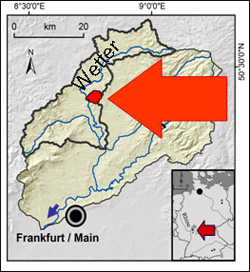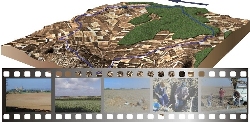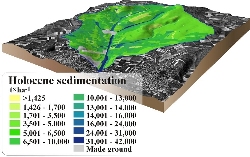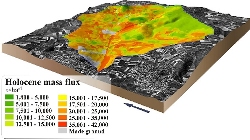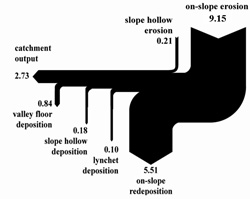Rockenberg catchm. sediment budget
A Sediment Budget for Rockenberg Catchment |
|
| P. Houben | |
|
This page contains a rough summary of otherwise not yet published research:
|
 |
Summary |
|
An extensive sediments and soils survey in the loess-mantled Rockenberg catchment provided entry data for a project-related database. The whole suite of field data is based on more than 700 corings, 12 soil pits, precise leveling of catenary sequences, independent lynchet mapping, analysis of aerial photographs, database applications, SQL queries extracting soil profile truncation and burial values, 20 OSL and 4 14C datings. The empirical sediment budget was accomplished by GIS datamodeling. Error calculations of the empirical budget showed an average error of 30 %. Further statistical tests (e.g., autocorrelation analysis) and random downsampling proved the data to be reliable at the catchment scale. The resulting independent field-based data from the pilot catchment serves for cross-validation of datamodeling results. A wealth of field-based evidence and datings are available for Rockenberg catchment. This allows exemplifying spatial and temporal characteristics of quantified sediment fluxes for the 7500 years period of agriculture. System fluxes are defined as fluxes between sources and sinks within a river catchment that is bounded by its divide. Database applications and GIS-based data processing deliver
The budget values (cf. Fig. at page bottom) illustrate the virtual velocity of hillslope-derived sediments through the catchment. On-slope and valley floor fluxes show significant differences in erosion, storage and delivery due to their different functioning within catchment-scale sediment flux. Key values are provided in the form of rates of sediment production, net erosion, trap efficiency, residence time etc. for Rockenberg catchment. The diverging rates of sediment production and net erosion illustrate the generation of the nearly omnipresent thick colluvial cover that was found in the area. The numbers on residence time and alluvial trap efficiency also demonstrate different functional properties of hillslopes, slope hollows and valley floors along the sediment cascade. |
|
|
|
|
|
Objectives
|
|
|
Rockenberg catchment - our pilot area
|
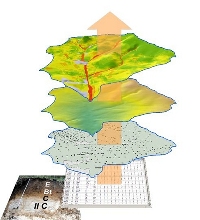 |
Our approachExpertise required
Workflow
|
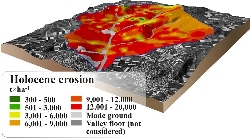
|
Results
|
|
|
Conclusion
|
|
|
Acknowledgment
We gratefully acknowledge the DFG for funding this project as part of the RheinLUCIFS initiative.




